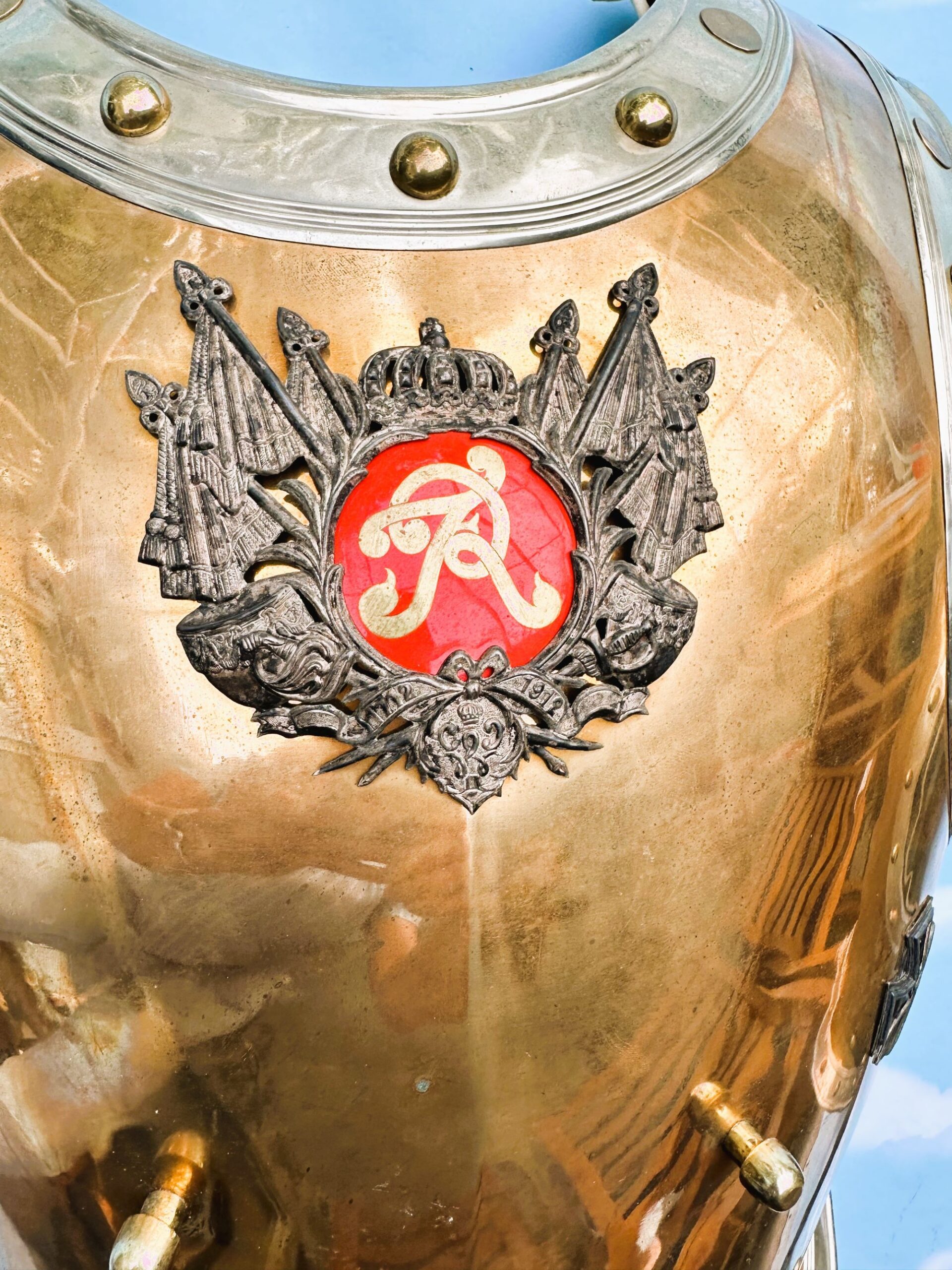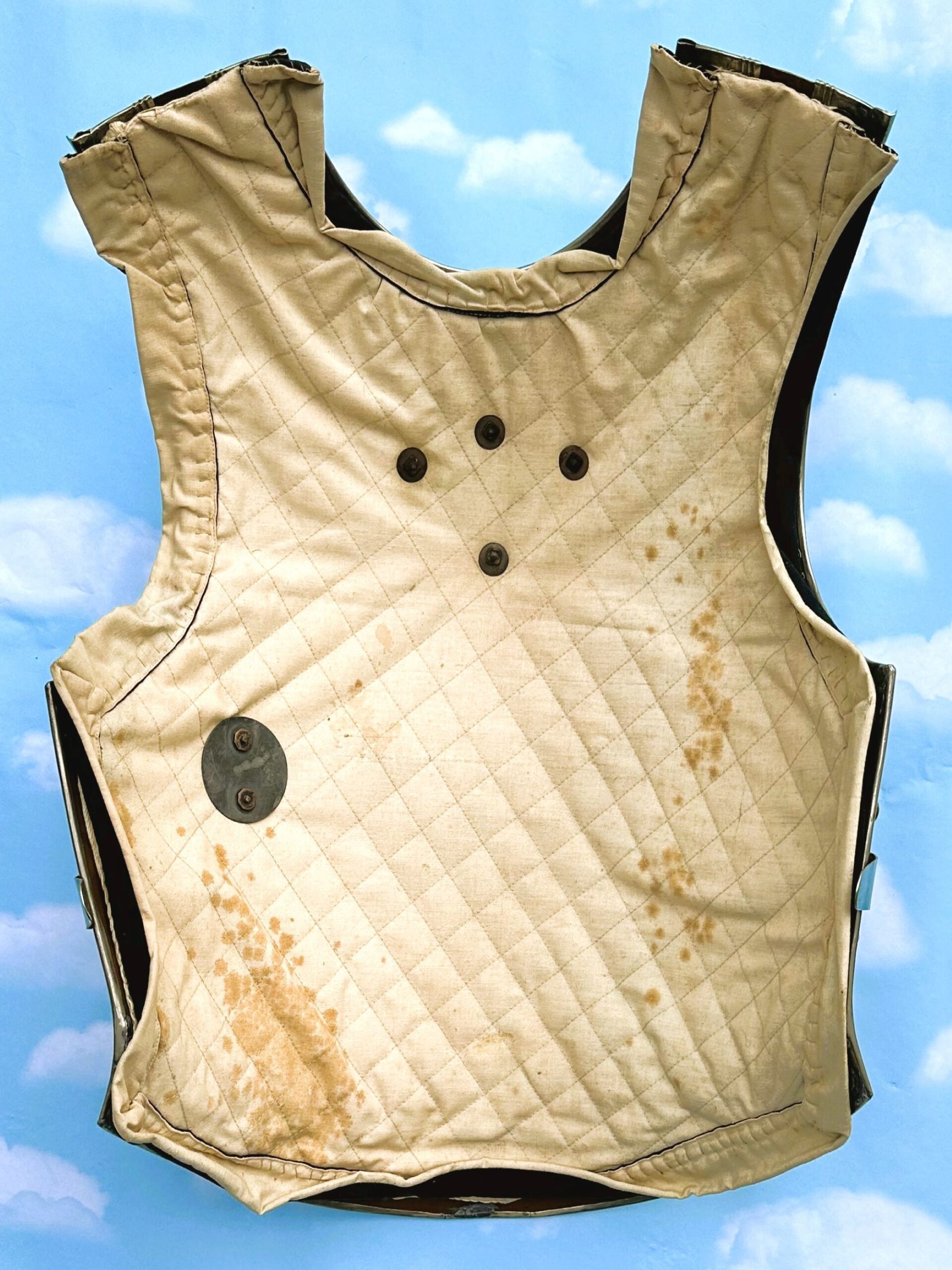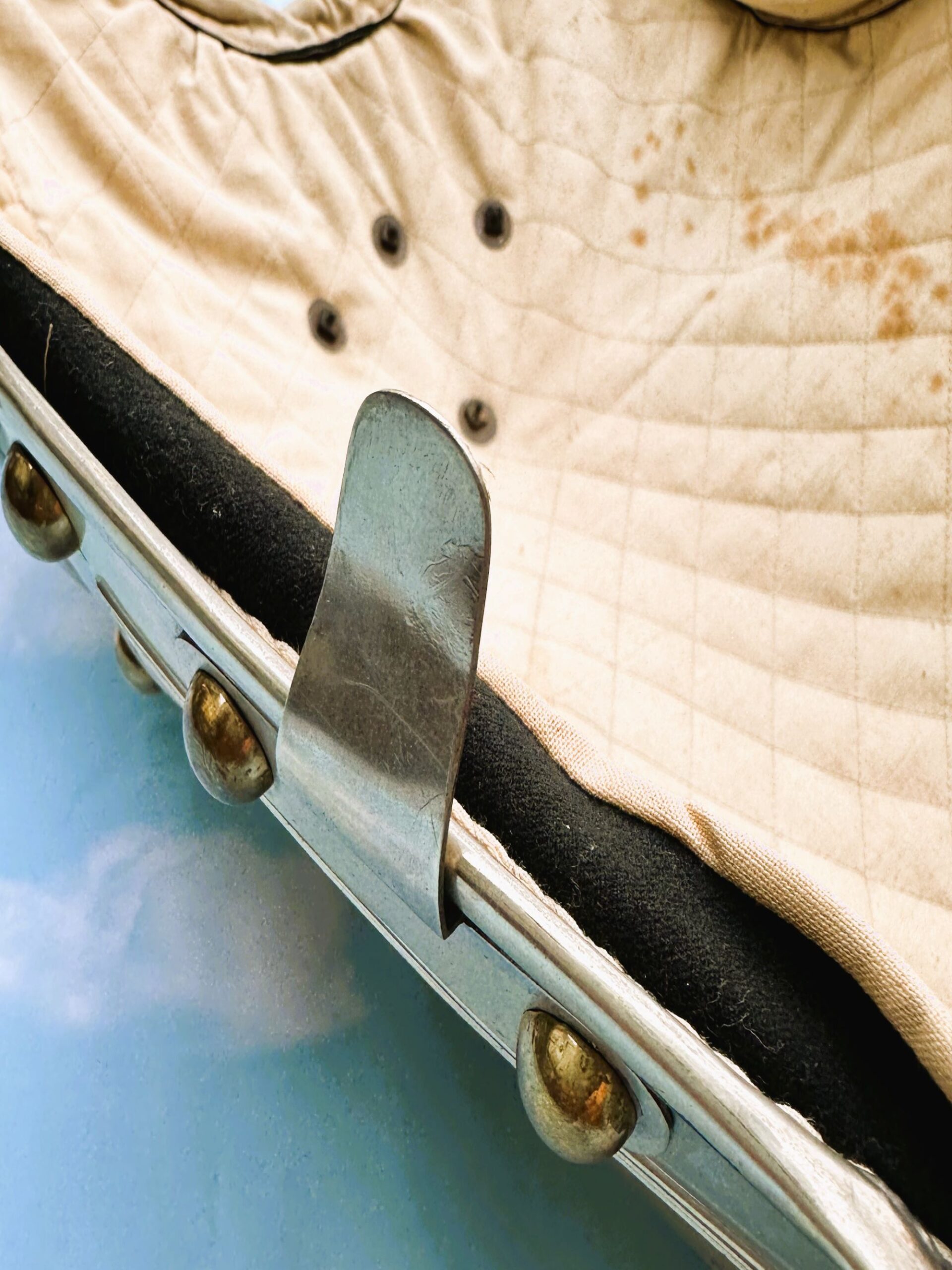Description
Step into the world of the renowned Garde du Corps Regiment, a proud Kuraßier-Regiment known for their majestic parades during the post-Napoleonic era. Officers and enlisted men of this estee
med regiment adorned themselves with the distinctive küraß, a symbol of honor and tradition. Notably, whenever Kaiser Wilhelm II graced the field with his presence, Garde du Corps members stood proudly by, their pickelhaube helmets displaying the crowned Eagle of the House of Hohenzollern alongside the Kaiser’s personal standard.
We present an ultra-rare and highly coveted küraß meticulously crafted for an OFFICER of the Garde du Corps Regiment. This particular piece carries with it a captivating story that adds depth to its historical significance. While the identity of the original owner remains a mystery, it is evident that this küraß held a deeply personal connection for him.
The kuraß comprises two distinct pieces. The body of this opulent piece gleams with a golden-toned tombak, akin to the iconic spike helmet, adorned with exquisite silver trim along its edges. The back portion retains all of its original straps, featuring a striking Lion emblem at the top, where the straps connect with the front section. The interior of both halves is luxuriously lined with quilted cotton, exemplifying the attention to detail and comfort of its wearer.
Yet, the pièce de résistance lies in the front half of the küraß. In 1912, a special emblem, the MEDALIAN, was authorized to commemorate the period of 1812-1912, harkening back to the Napoleonic wars. For officers, this emblem was a marvel of rich red enamel delicately encased within a silver wreath. This emblem adorns the top of the küraß, signifying a profound connection to a bygone era.
What sets this küraß apart from others is the addition of an Iron Cross 1st Class from 1914 affixed to the left breastplate. This emblematic addition signifies that the officer served in the regiment during the tumultuous years of 1914-1918, during the crucible of World War I.
The overall condition of this küraß is nothing short of excellent, a testament to its preservation and enduring value. For collectors and enthusiasts alike, this ultra-rare artifact provides a window into the Garde du Corps’ storied past.
If you already possess an officer’s helmet for parades, this kuraß would make a splendid complement. Don’t miss the opportunity to acquire this exceptional piece of history that encapsulates the legacy of the Garde du Corps Regiment and its dedicated officers.
The Garde du Corps Regiment, often referred to simply as the “Garde du Corps,” was one of the most prestigious and elite military units in Prussia and, later, the German Empire. Established in 1740 by Frederick the Great, the regiment was initially composed of noble Prussian officers and was known for its exceptional discipline, honor, and loyalty to the Prussian monarchs.
Here are some key points about the Garde du Corps Regiment:
1. Formation and Early History: The Garde du Corps was formed as a cavalry regiment and served as a personal bodyguard to the Prussian king. Its primary duty was to protect the king during battles and ceremonies. The regiment quickly gained a reputation for its exceptional horsemanship and martial skills.
2. Role as a Kuraßier-Regiment: The Garde du Corps Regiment was known as a Kuraßier-Regiment, which designated it as heavy cavalry. The term “Kuraßier” referred to the type of armor the soldiers wore, known as a “kuraß” or “cuirass.” These cuirasses were chest and backplates made of metal and were a distinctive feature of the regiment’s uniforms.
3. Distinctive Uniform: The Garde du Corps had a distinctive and impressive uniform, which included the iconic pickelhaube helmet adorned with the crowned Eagle of the House of Hohenzollern, symbolizing their close ties to the Prussian monarchy. The officers and enlisted men took great pride in their immaculate appearance during parades and official events.
4. Role in Ceremonies: The regiment played a prominent role in royal ceremonies, parades, and state functions. Whenever the Prussian monarch, including Kaiser Wilhelm II, was present, members of the Garde du Corps would accompany him in full parade attire, carrying the Kaiser’s personal standard.
5. Historic Significance: The Garde du Corps Regiment had a long and storied history, participating in various conflicts throughout the years, including the Napoleonic Wars and World War I. Its members were renowned for their bravery and unwavering dedication to their duty.
6. Enduring Legacy: The legacy of the Garde du Corps Regiment lives on through its rich history, traditions, and the rare artifacts associated with the regiment. Collectors and enthusiasts often seek out items like cuirasses, helmets, and uniforms as prized pieces of military history.
Overall, the Garde du Corps Regiment stood as a symbol of Prussian and later German military tradition, embodying the ideals of loyalty, honor, and duty. Its distinctive uniforms, including the Kuraß, continue to be highly sought-after collector’s items, offering a tangible link to a bygone era of chivalry and nobility within the military.

















